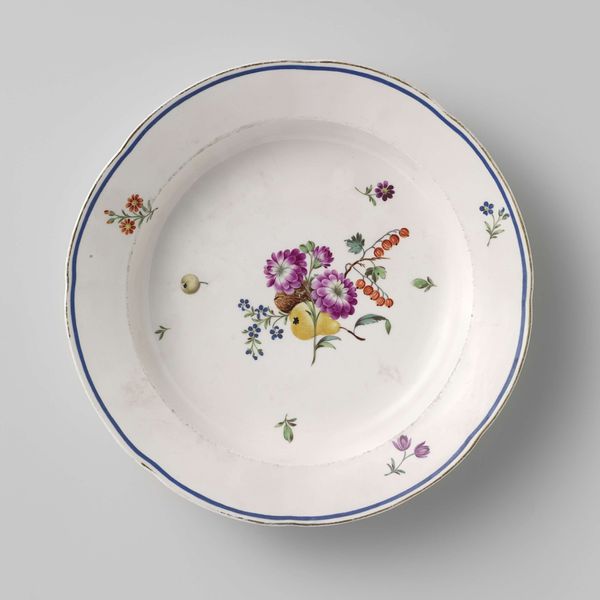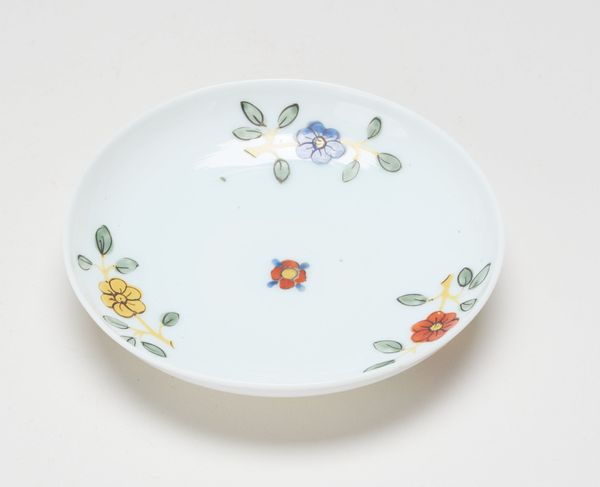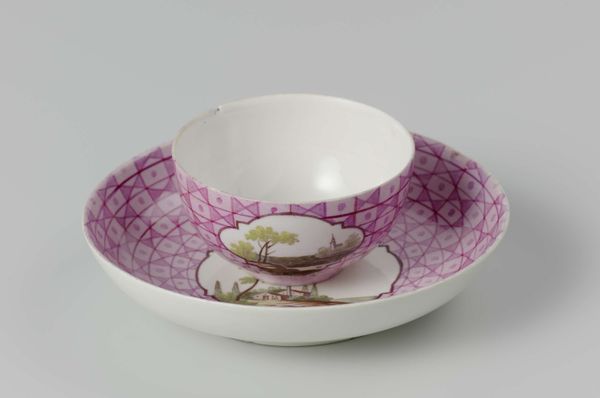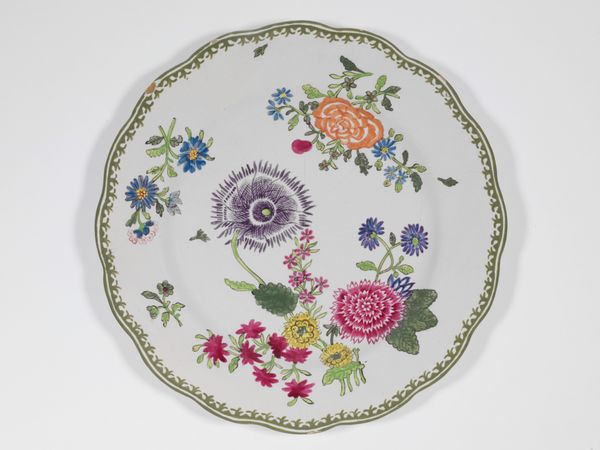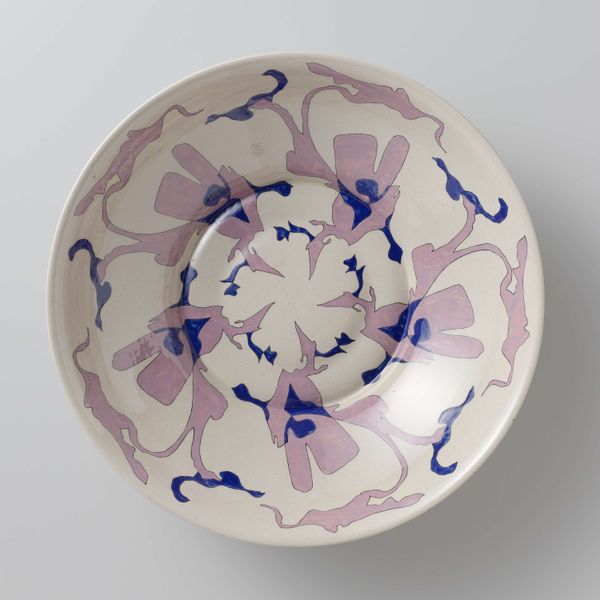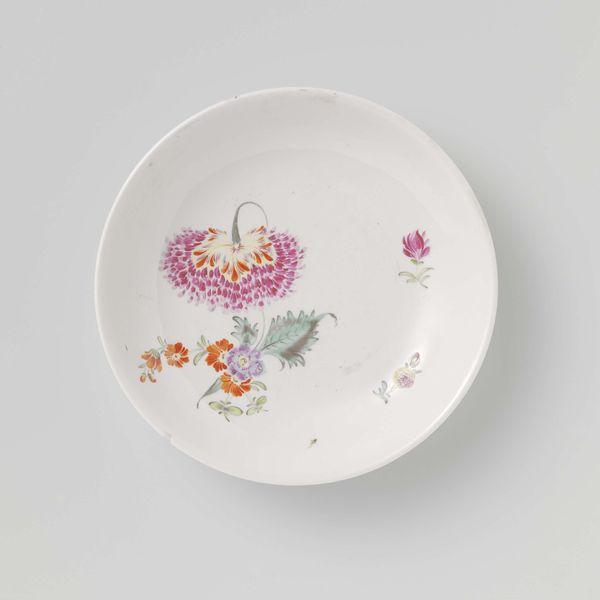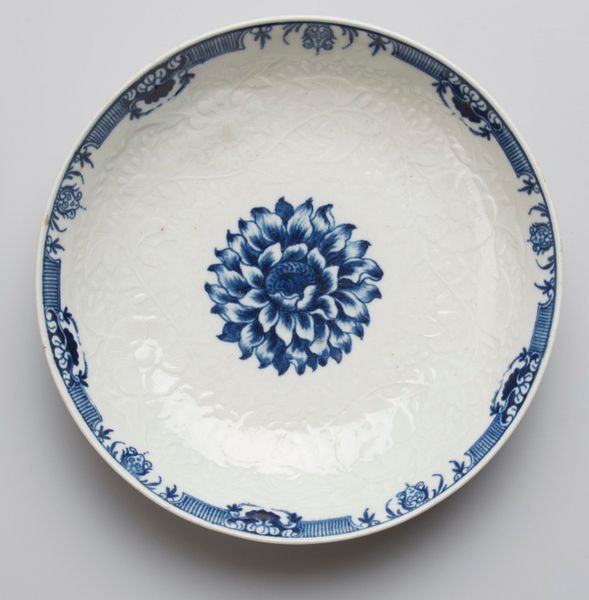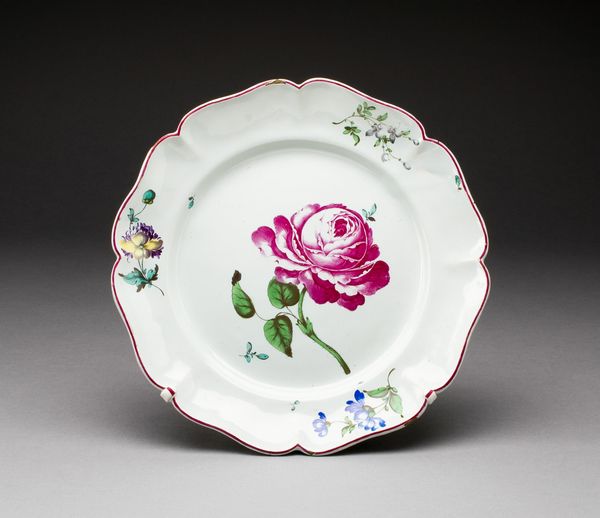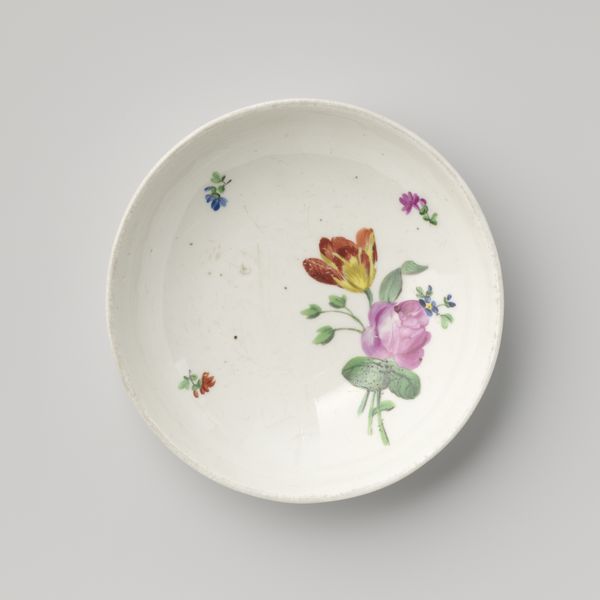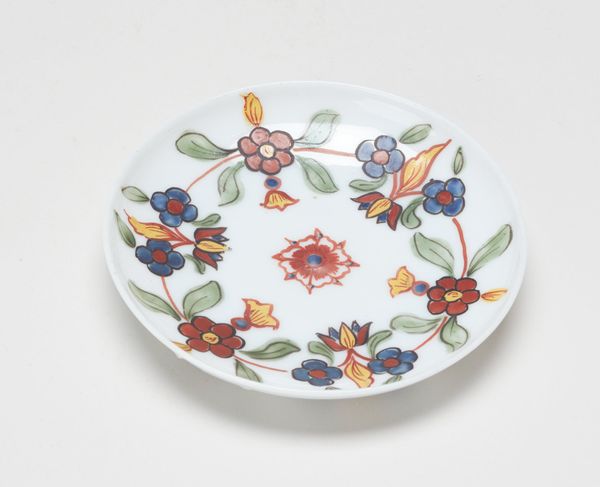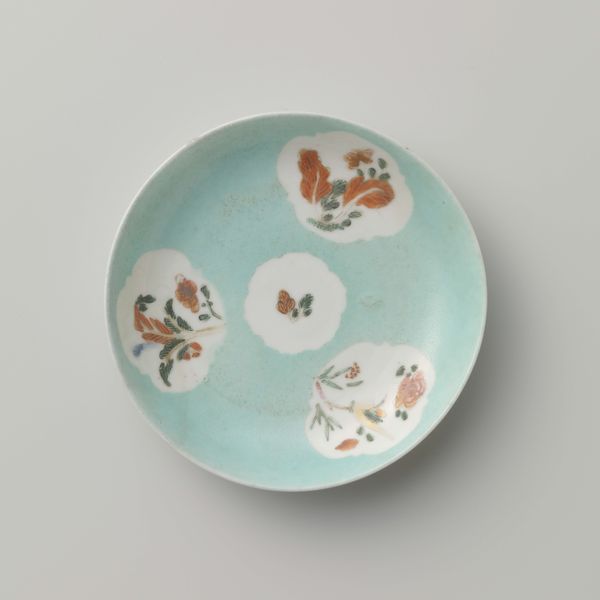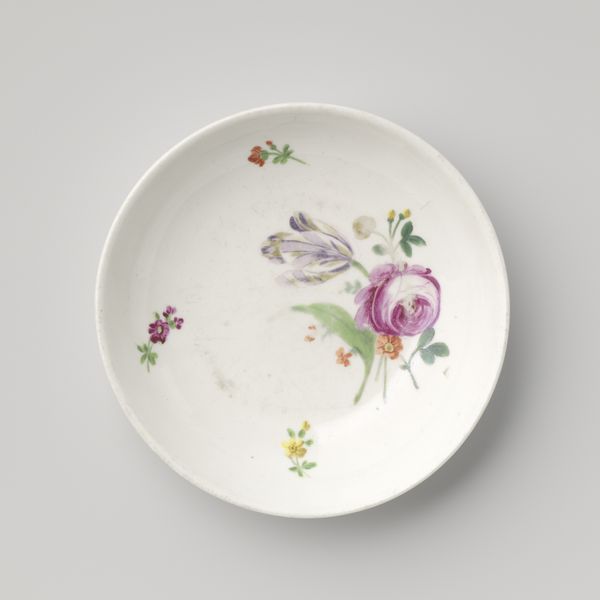
Dimensions: height 5.2 cm, diameter 18.6 cm
Copyright: Rijks Museum: Open Domain
Curator: Here we have two earthenware bowls crafted around 1922 by N.V. Plateelbakkerij Ram, featuring what they called the "Nalopend" or "Running" pattern. Editor: My first impression is of domesticity—these feel like pieces meant to be used and admired in the everyday. Curator: Absolutely. The "Nalopend" design suggests a certain dynamism. Look at how the geometric floral patterns are distributed around the rim, creating a sense of movement, of things in flux. What sociopolitical events occurring at the time might have impacted this kind of imagery? Editor: Considering its earthenware construction and decoration rooted in floral patterns, one might think about the Arts and Crafts movement and the rise of industry impacting artistic practice. Were these pieces perhaps resisting the move toward mass production? It makes one consider the work put into creating individual works. Curator: It's possible. Given the post-war context, there was a great need for beautiful objects and design. These are both beautiful and utilitarian objects. Do you find that the artists consciously imbue objects like these with identity and politics? Editor: The material qualities speak to me the most. The glaze, the color choices... they communicate value through their composition, presenting functional items as aesthetically worthwhile. I appreciate seeing labor and technique honored this way. The bright but earthy tones—do you think they were selected to resonate with a certain social class? Curator: Yes, colors play an important role in constructing this social resonance. However, the repeating florals and manufactured form of these bowls position the artist somewhere between an elite craftsperson and someone catering to the desires of early 20th-century consumers, reflecting a certain type of class aspiration. The "running" design perhaps also conveys ideas of progress and a world always in transition. Editor: These bowls reflect tensions between handcraft and industrial design during a pivotal moment of mass production. They ask us to examine labor and consumption through materiality. Curator: Yes, seeing how domestic objects intersect with broader socioeconomic trends—it certainly encourages critical engagement and thoughtful reflections on this pivotal moment in time.
Comments
No comments
Be the first to comment and join the conversation on the ultimate creative platform.
